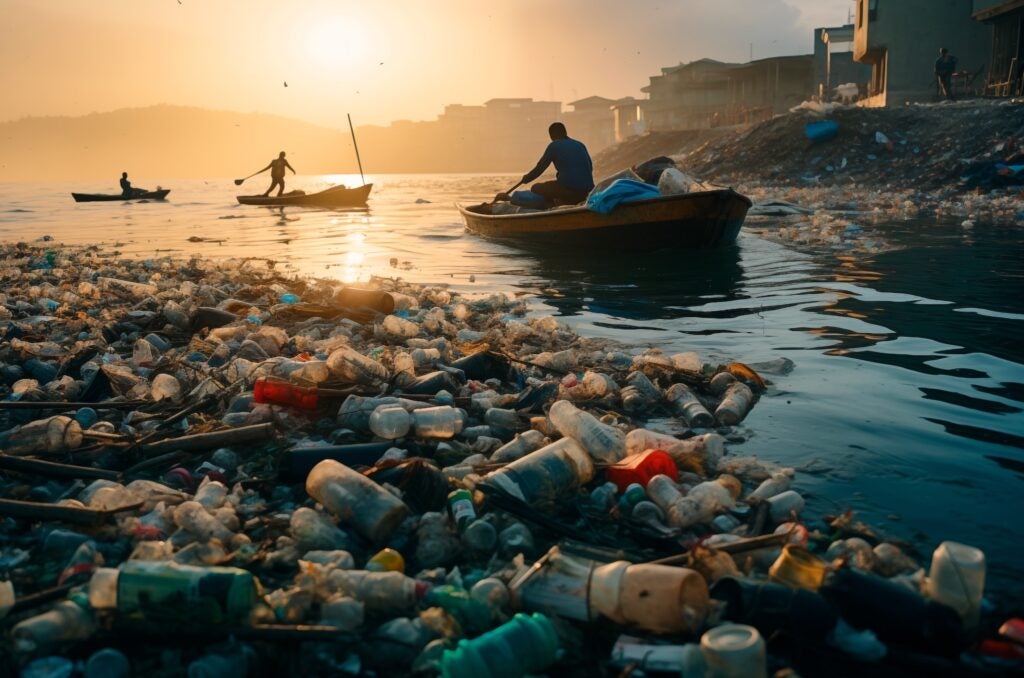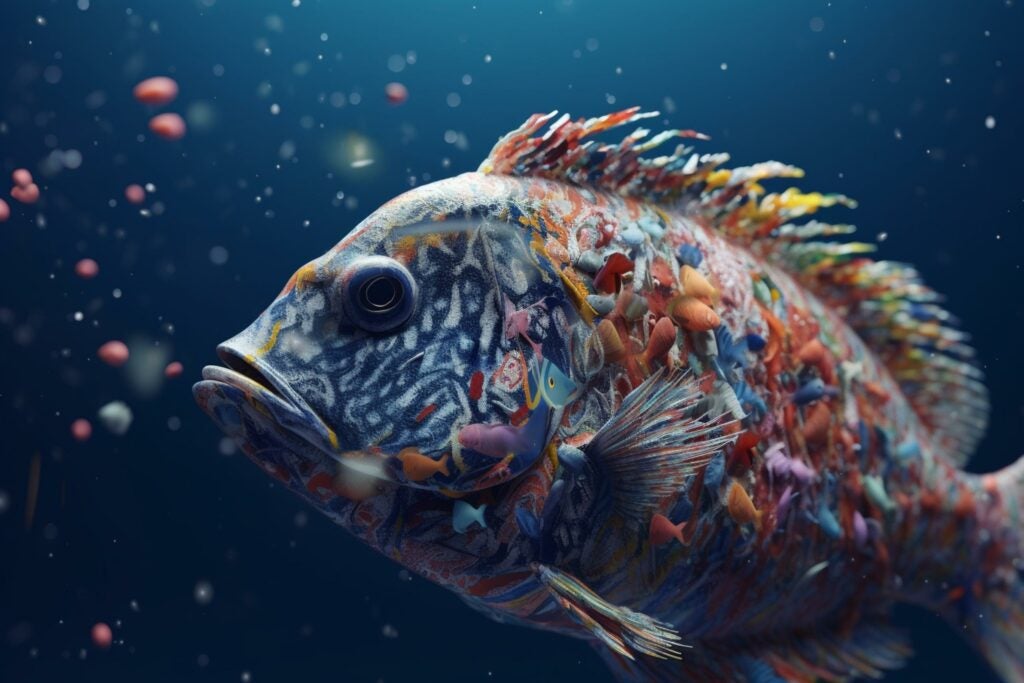The Mega Impact of Microplastics: the Reality of the “Great” Pacific Garbage Patch
By Max Scheiner, MS-ESM ‘24

Volunteers pick up garbage from a polluted body of water. Photo courtesy of Lucas on Adobe Stock.
When you hear about the “Great Pacific Garbage Patch” (GPGP), what first comes to mind?
Most likely, you think of massive islands of trash in the middle of the ocean, supposedly twice the size of Texas. However, after learning about this phenomenon in my environmental science class, I discovered this common perception is far from reality. Most of the GPGP is not visible to the naked eye — a reality in sharp contrast to the mental image of piles of plastic waste floating on the ocean surface. In fact, the majority of plastic does not end up in the ocean. A study conducted by Our World in Data found that approximately 0.5% of plastic ends up in the sea, while the majority of it resides on shorelines. So, why is there so much focus on plastic pollution in the ocean, and why is the Great Pacific Garbage Patch so misrepresented?
When I spoke to Dr. Jennifer Brandon, a sustainability consultant and leading expert on the emerging dangers of microplastics, she explained that at least 90 percent of the trash is microplastics, which are “tiny plastic particles less than five millimeters in size.” While the specifics are unclear, the World Wildlife Fund estimates that microplastics make up 94 percent of objects in the Great Pacific Garbage Patch. Indeed, these microplastics have resided in the ocean for so long that scientists have found around 40 different organisms (e.g., mussels and barnacles) inhabiting the plastic. The durability of plastics has also played a role as a habitat or aid in the lifecycles of the organisms that inhabit them. Knowing this about the GPGP, how should we go about large-scale cleanup?
According to Dr. Brian Griffiths, Assistant Teaching Professor at the Earth Commons, “Any policy or action that relates to plastics has to consider the life that lives there but also the life that has now adapted to a plastic-filled ecosystem.” But, isn’t plastic supposed to harm marine life? Surprisingly, since plastic “can float in the oceans for a long time, [it] allow[s] creatures to survive and reproduce in the open ocean for years.” Now that scientists are looking, they are likely to find more organisms latching onto plastic in the GPGP and the durable ecosystem it provides.
Devastatingly, many plastic removal technologies have not been tested to evaluate their effectiveness in the context of organisms living within the plastic ecosystem itself. In fact, “some [clean-up devices] have been shown to harm quantities of marine organisms–including fish, crustaceans, and seaweeds–that far exceed the amount of plastic captured, meaning their overall impact on the ocean is potentially more harmful than helpful.” We are not looking at the problem holistically if plastic clean-up organizations do not consider species’ livelihoods.

Fish covered in microplastics and waste in the ocean. Concept of ocean pollution. Photo courtesy of Kato on Adobe Stock.
Our current solution — dragging a large net across the GPGP to clean up plastic — might solve one aspect of the plastic problem but it puts the organisms living there at risk. However, there is a more robust solution: reducing plastic production at the source. Because “plastic production [is] projected to triple by 2060, the most cost-effective and efficient way to prevent further pollution is to reduce plastic production and consumption.” Since resources to solve this issue are finite, it is especially incumbent that we pursue the solution that brings about the most good. Reducing plastic production not only limits plastic from entering the ocean but allows the organisms that inhabit existing plastic to thrive and limits the amount of microplastics in the human food system. In order to avoid a band-aid solution, we must weigh the environmental and economic costs of plastic removal with the short- and long-term benefits of doing so.
Without addressing the root causes of the problem, we will only cure its symptoms by cleaning up plastics after they enter the ocean and harming those creatures who have already adapted to our pollution. When we reimagine the production and consumption systems we currently rely on, we must be clear-eyed about the complexity of our impact and ask the question: What is the true cost of our plastics in production and clean-up?
